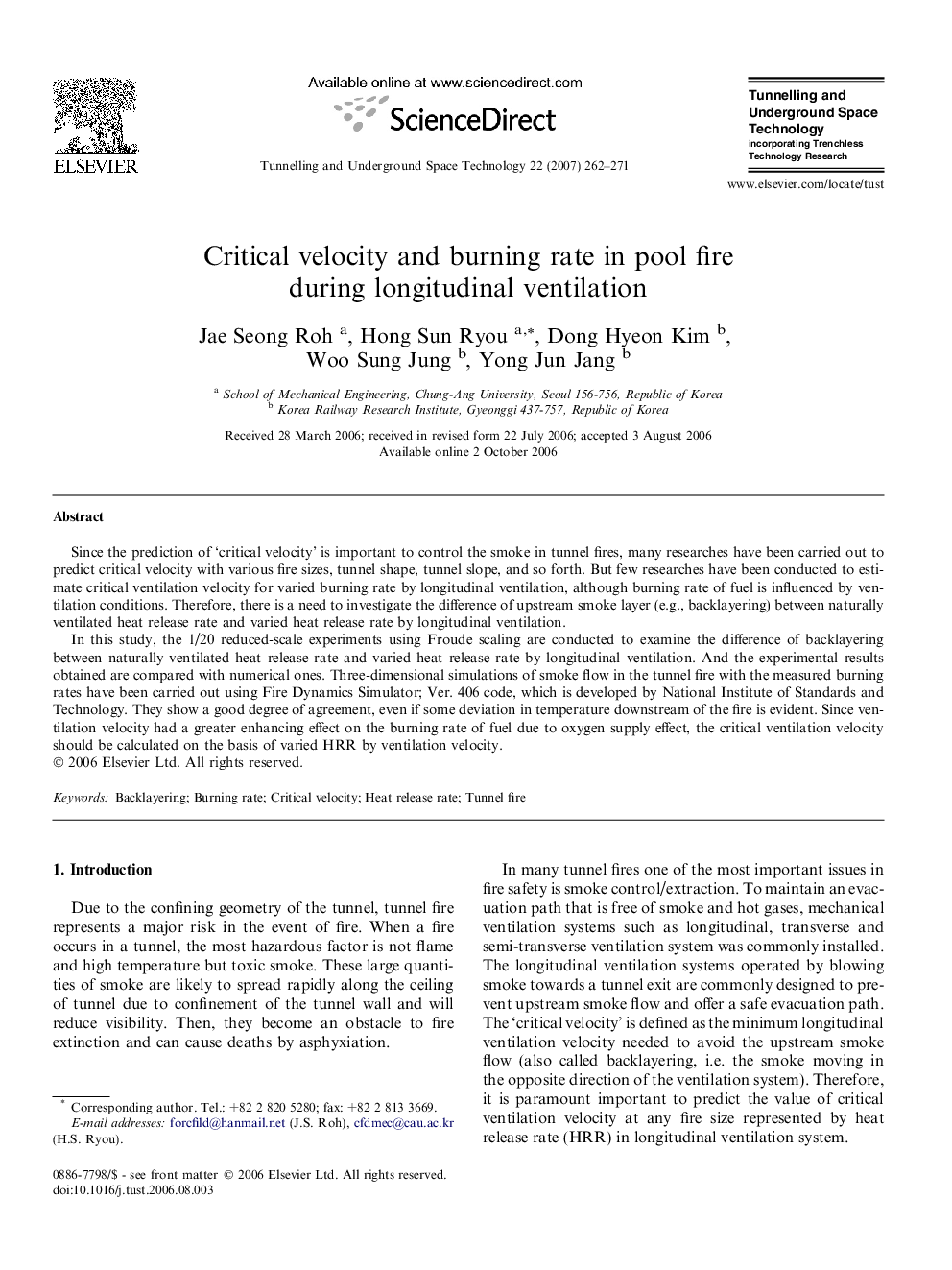| Article ID | Journal | Published Year | Pages | File Type |
|---|---|---|---|---|
| 312073 | Tunnelling and Underground Space Technology | 2007 | 10 Pages |
Since the prediction of ‘critical velocity’ is important to control the smoke in tunnel fires, many researches have been carried out to predict critical velocity with various fire sizes, tunnel shape, tunnel slope, and so forth. But few researches have been conducted to estimate critical ventilation velocity for varied burning rate by longitudinal ventilation, although burning rate of fuel is influenced by ventilation conditions. Therefore, there is a need to investigate the difference of upstream smoke layer (e.g., backlayering) between naturally ventilated heat release rate and varied heat release rate by longitudinal ventilation.In this study, the 1/20 reduced-scale experiments using Froude scaling are conducted to examine the difference of backlayering between naturally ventilated heat release rate and varied heat release rate by longitudinal ventilation. And the experimental results obtained are compared with numerical ones. Three-dimensional simulations of smoke flow in the tunnel fire with the measured burning rates have been carried out using Fire Dynamics Simulator; Ver. 406 code, which is developed by National Institute of Standards and Technology. They show a good degree of agreement, even if some deviation in temperature downstream of the fire is evident. Since ventilation velocity had a greater enhancing effect on the burning rate of fuel due to oxygen supply effect, the critical ventilation velocity should be calculated on the basis of varied HRR by ventilation velocity.
